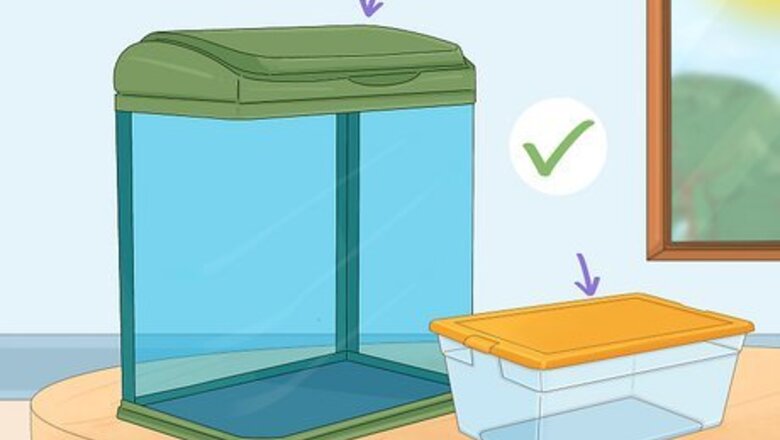
views
Creating the Habitat
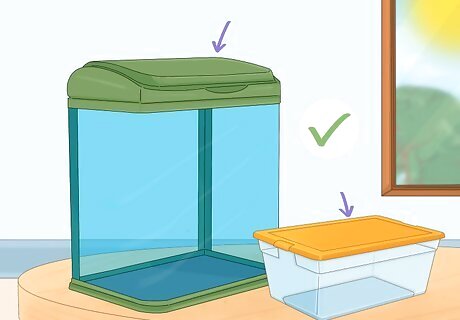
Get a small or medium enclosure. Purchase a hard plastic or glass enclosure at a local pet store. Although it you might want to, you should not try to keep multiple scorpions together as cannibalism is a real possibility as most scorpions cannot cohabitate peacefully especially popular varieties such as the beginner friendly Emperor scorpion, Asian forest scorpions and desert hairy scorpions. All scorpions are do not require friends to be live a happy and healthy. There are a few species that can cohabitate with each other though, but make sure you do a ton of research to pull it off successfully and do not be surprised if a few or all your scorpions kick the bucket. Some good species to try this with are Dictator scorpions, Arizona bark scorpions and Florida bark scorpions. Make sure your enclosure has a top that snaps on securely.
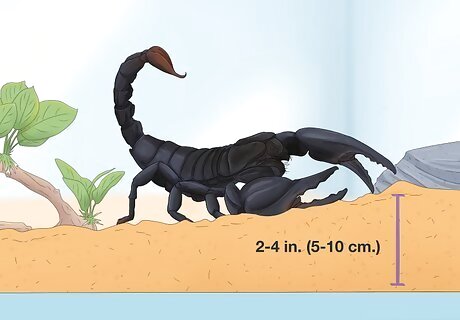
Place substrate at the bottom of the habitat. Substrate is a layer of organic and/or inorganic material that covers the bottom of your enclosure. You need to provide 2 to 4 inches (5 to 10 centimeters) of appropriate substrate for most scorpions. Substrate is important, as it will give your scorpion something to burrow into. For desert scorpions, use sand. For species that live in temperate or tropical environments, use soil or pieces of bark or mulch. If you have a burrowing species of scorpion (like desert hairy scorpions), you might want to add 6 inches (15 centimeters) of substrate. You can gather substrate on your property (if it is appropriate for the species of scorpion you have), or you can purchase it at a pet store. If you gather substrate from your own property, use caution as it could contain bugs or pesticides that may harm your scorpion.
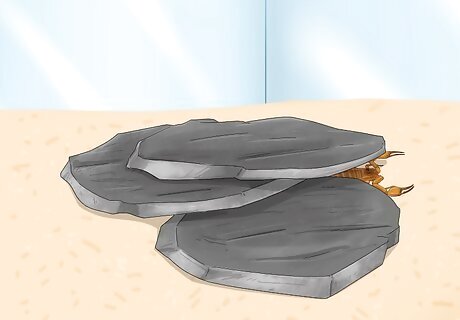
Place flat rocks in the aquarium. Find 2 to 3 large rocks and place them in the aquarium. You can spread them out or put them together. These are important as they will provide the scorpion a place to hide. Make sure that your scorpion has places to hide, as this is important for the happiness of your pet.
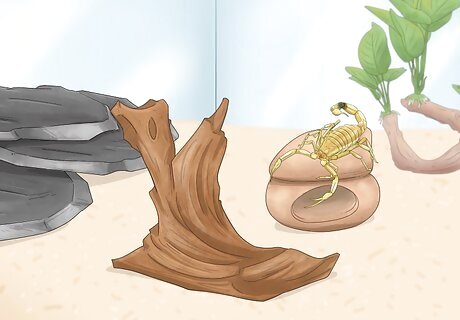
Decorate the enclosure. One of the most enjoyable parts of having a scorpion is decorating its enclosure. In addition to rocks, you can provide your scorpion with a variety of features to make the habitat interesting and diverse. Some features include: Pieces of wood Small plants Pieces of ceramic pots
Establishing the Right Climate
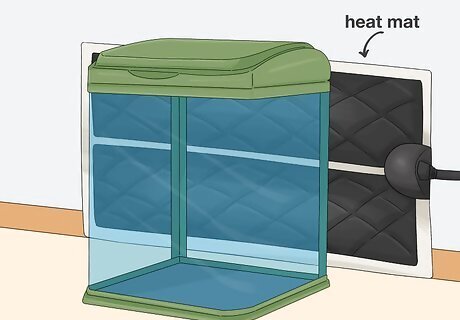
Install a heat mat. Purchase a heat mat from a local pet store or online. Then, tape the mat to the back side of the enclosure. The heat mat will provide the scorpion with enough heat to thrive. In addition, by securing it to the enclosure, you’ll allow your scorpion to move toward or away from it depending on the heat in the habitat. As an alternative, you could also place the heat mat partially under the tank. Make sure the heat mat only covers half to two thirds of the enclosure.
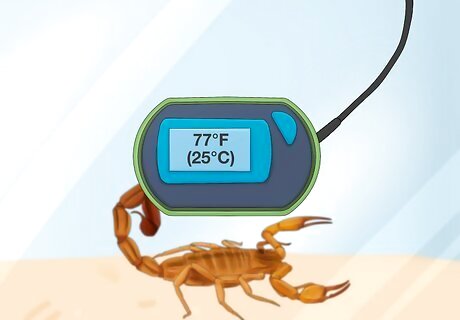
Keep a thermometer inside the habitat. While your heat mat will do a lot to heat the terrarium, you’ll still have to monitor the temperature inside. To do this, keep a thermometer inside the habitat. Make sure the temperature is always around 77 degrees Fahrenheit (25 degrees Celsius). This, though, could vary depending on the time of day and the type of scorpion you have. Desert species prefer a range of 72 to 85 degrees Fahrenheit (22 to 29 degrees Celsius). Tropical species prefer a range of 70 to 80 degrees Fahrenheit (21 to 26 degrees Celsius). Temperatures should never go above 86 degrees Fahrenheit (30 degrees Celsius). Temperatures should be kept constant.
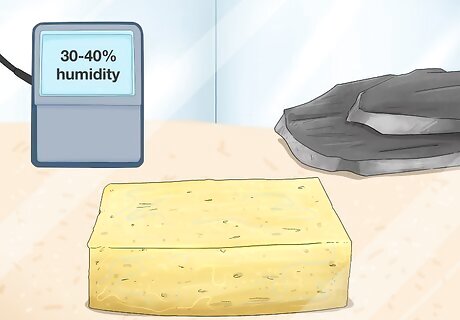
Keep a wet sponge in the terrarium. A wet sponge will help keep the habitat humid. Dampen the sponge every couple of days. Humidity is important, as your scorpions could dry out without it. Try to keep the humidity of the habitat above 30% to 40%. It's best to use a humidity gauge to monitor the habitat, which can be installed on the side of the terrarium.
Feeding
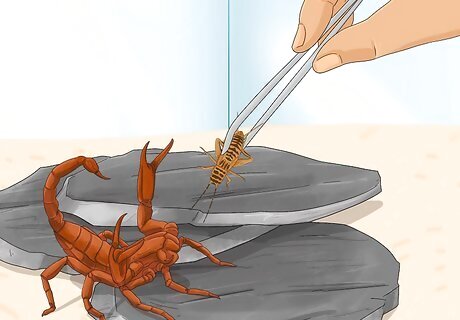
Feed your scorpion a couple times a week. Depending on the size and type of scorpion, you’ll have to feed it once or twice a week. Feedings should consist of small crickets or pinheads. Make sure that you gut load the crickets to ensure that your scorpion gets enough nutrition from its meal. Gut loading means feeding your crickets nutritious foods. Whatever nutrients they take in, your scorpion will get by eating them. You can buy a commercially prepared gut loading food, or you can feed the crickets fruits and vegetables. Large scorpions may eat between 3 and 5 crickets a week. Take uneaten crickets or pieces of dead crickets out of the enclosure if they haven’t been eaten in 3 to 4 hours. You can also feed your scorpion a variety of insects, spiders, and lizards.
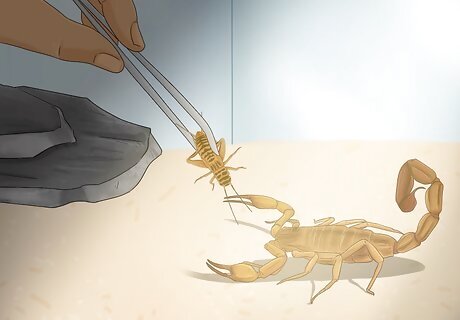
Schedule feedings at night time. Since scorpions are active at night, you should feed them at night. Not only will your scorpion likely eat what you feed it, but you’ll be super entertained watching it eat. If you find your scorpion doesn’t eat when you feed it, change your feeding time by a couple of hours. Feed your scorpion regularly once you’ve identified a time that your scorpion likes to eat.
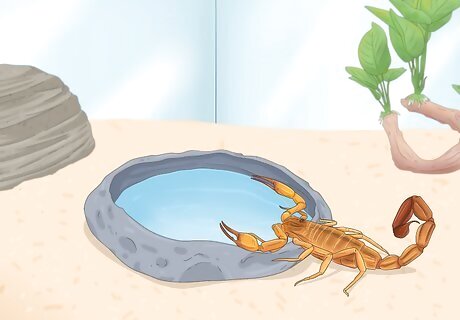
Provide a shallow dish of water. While scorpions don’t drink much water, they still need to have it around. As a result, you should keep a very shallow dish (1 inch/2.5 centimeters or less) full of clean water in the enclosure. Make sure the water does not flood the substrate.
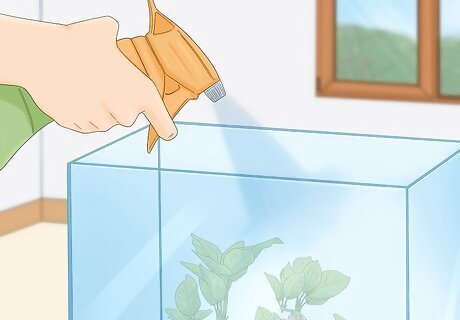
Mist the habitat. In addition to keeping a shallow dish full of water, you might also consider misting the enclosure every so often. By spraying a mist, you’ll give your scorpion another way to get water, and you’ll provide water to any plants you may have placed in the enclosure. Don’t mist the scorpion directly.
Being Safe
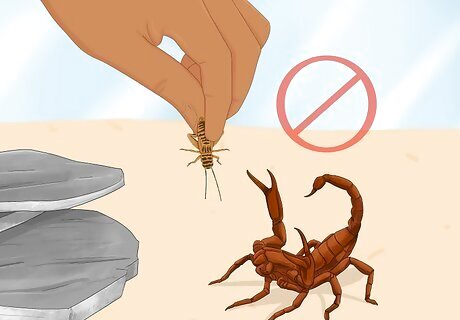
Do not handle your scorpion. The majority of scorpions sting. While the severity of their stings varies depending on the species, most of them can inflect extreme pain on people. Some scorpion stings could result in death. Instead of handling them, have fun watching them from outside the enclosure. Use tongs to feed your scorpion instead of dropping crickets by your hand
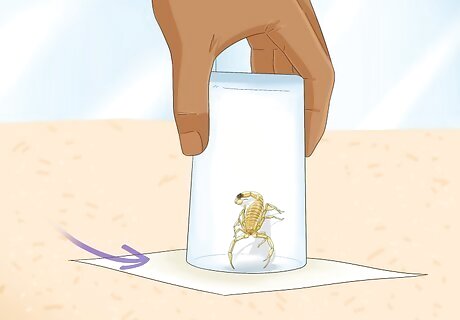
Trap or confine your scorpion before cleaning their habitat. Before you do any work on the terrarium, you should trap or confine your scorpion. You can do this by taking a transparent cup and placing it over the scorpion. Then, slide a piece of cardboard underneath the bottom of the cup. After trapping the scorpion, you can choose to move it to another container to clean around it. If you have two or more scorpions, you may need help trapping both simultaneously – ask a friend. You may be able to purchase a ready-made non-lethal scorpion trap online or at a pet store near you.
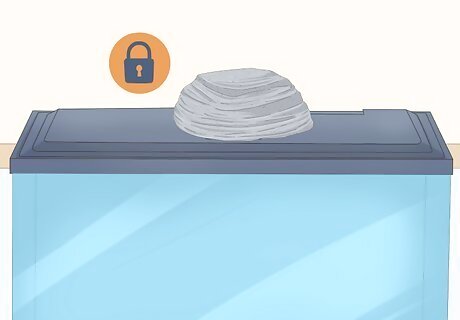
Secure the top of the aquarium. If you have a terrarium or aquarium with a snap on top, make sure the it snaps shut when you close it. If you have another sort of habitat, make sure it is appropriately sealed. This is important, as your scorpion could escape and wind up hurting you, a family member, or a pet. Consider placing rocks or something heavy on top of the closure for added protection. Instruct small children and visitors not to take off the top of the enclosure when you are not around.
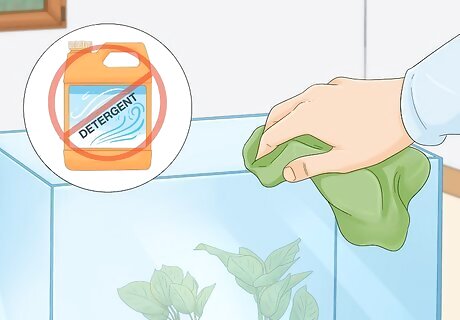
Avoid using chemicals to clean the habitat. Scorpions are very clean. As a result, you don’t need to use chemicals to clean their habitat. In addition, chemicals (like detergents or household sprays) could poison your scorpion. If you do need to clean any surface in the habitat, wipe it down with a clean cloth and warm water.



















Comments
0 comment